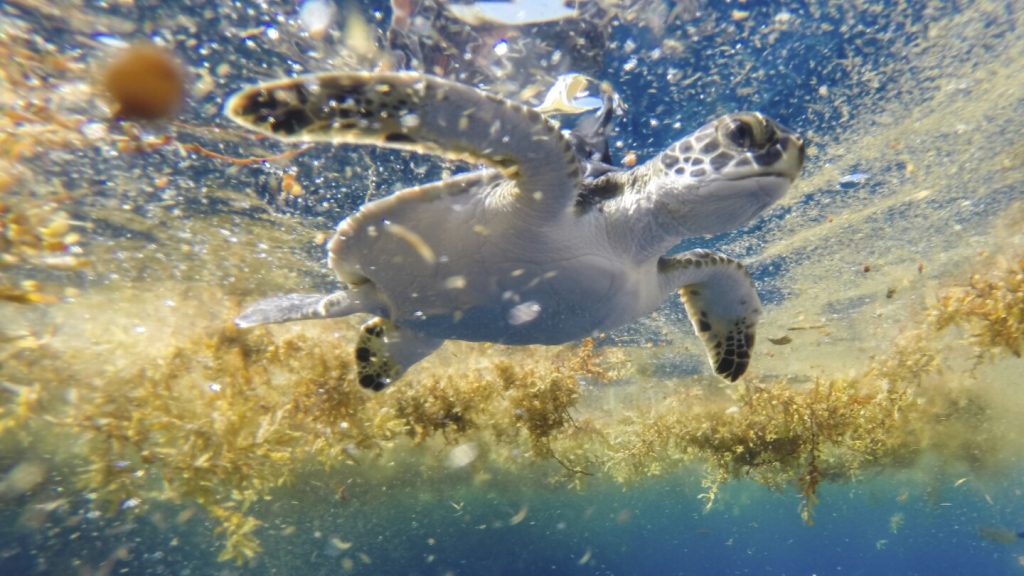For decades, the early life stages of sea turtles, aptly termed the “lost years,” have remained a perplexing enigma for marine scientists. These crucial years, spanning from the time tiny hatchlings scramble off the beach into the vast ocean until their near-adult return to coastal waters, typically last between one to ten years. Previous understanding, largely based on conjecture, posited that these young turtles were passive drifters, carried by ocean currents. However, groundbreaking research utilizing satellite tracking technology is finally shedding light on this mysterious period, revealing a far more dynamic and purposeful existence for these juvenile reptiles.
A team of scientists, led by Kate Mansfield of the University of Central Florida, embarked on a painstaking decade-long project to track young sea turtles in the Gulf of Mexico. Their efforts focused on attaching small, solar-powered GPS tags to the rapidly growing shells of wild turtles. This presented a significant technological challenge, requiring the development of flexible tags that could adhere to the constantly shedding shells long enough to transmit valuable location data. The team meticulously tracked 114 turtles representing four endangered species: green turtles, loggerheads, hawksbills, and Kemp’s ridleys, providing an unprecedented glimpse into their early life movements.
The data collected from these tags dramatically overturned the long-held assumption of passive drifting. Instead of being at the mercy of currents, the young turtles demonstrated active swimming behavior, making deliberate decisions about their direction and destination. This was confirmed by comparing the turtles’ paths with the trajectories of drifting buoys deployed simultaneously. While a significant portion of the buoys ended up washed ashore, the turtles consistently navigated away from the coast, highlighting their active role in determining their movements. This implies a surprising level of navigational ability in these young creatures, challenging previous beliefs about their early life capabilities.
The study further revealed that these young turtles exhibit a much greater range of movement than previously thought, transitioning between the continental shelf and the open ocean. This behavior likely reflects their exploration of different habitats and resources, and possibly their avoidance of predators. This unexpected variability underscores the complexity of their early life strategies and highlights the importance of understanding these behaviors for effective conservation efforts.
The implications of this research are far-reaching, providing crucial insights into the early life ecology of endangered sea turtles. Understanding their habitat use, movement patterns, and navigational abilities is paramount for developing effective conservation strategies. The Gulf of Mexico, a critical habitat for these species, is subjected to various human-induced threats, such as fishing gear entanglement and habitat degradation. The knowledge gained from this study will inform conservation efforts, helping to mitigate these threats and ensure the survival of these vulnerable populations.
By finally “finding” these “lost” turtles, scientists are gaining a clearer understanding of the challenges they face and the strategies they employ to survive. This research underscores the importance of technological advancements in unraveling the mysteries of the natural world and providing the knowledge needed to protect endangered species. The continued development and deployment of tracking technologies hold immense promise for further illuminating the lives of these fascinating creatures and informing conservation efforts to secure their future. The journey into the “lost years” has just begun, and future research promises to uncover even more fascinating details about these resilient reptiles.

